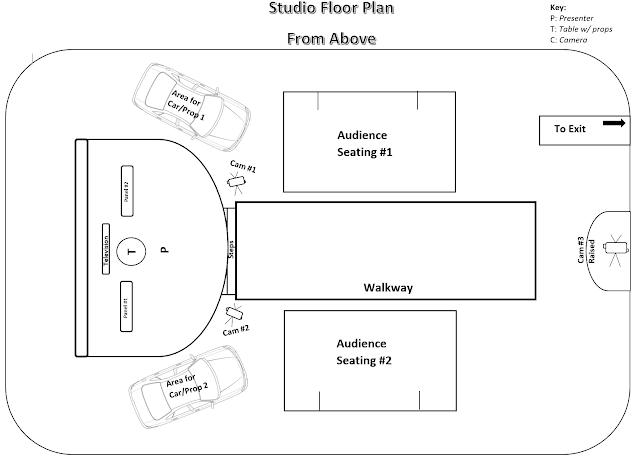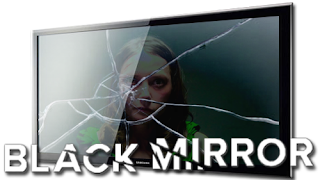Contextual Studies | Camerawork Lecture
Camerawork
Basic Elements of Camerawork
What is Camerawork?
- How the camera is used in television and film to serve story, character and action.
- The art of cinematography
- The primary grammar of visual storylines.
Basic Elements of Camerawork:
- The Shot - affects our emotional and psychological relationship with character and setting through composition and speed. E.g. How fast characters are moving.
- Movement - affects our emotional and psychological relationship with characters and setting through changes in visual styles.
Why do we use shots?
- The basic building blocks of visual grammar.
- The visual equivalent of sentence structure.
- If shots are words, mine en scene is meaning and editing is narrative structure.
Basic Shots:
- Wide Shot - establishes location, setting or character’s context in setting. Conveys sense of place and context. Can also convey characters relationship to surroundings, or social relationship to other characters as an ‘establishing shot’.
- Medium Shot - Usually used to display characters and dialogue. Focuses viewers attention on one or more principal characters. Commonly used for dialogue scenes as ‘two shot’ or ‘over the shoulder’. Emphasises personal relationships.
- Close-up - Often used for more subtle details, emotional, etc. Conveys intimacy and emotion . Often used for interior monologues/voiceover or speaking directly to camera.
- Extreme close up - Often used for extreme drama, focus on facial expressions or environmental details. Conveys heightened emotion (fear, suspense, desire) dramatic tension or a reveal.
“The size of the image is important to the emotion, particularly when you’re using that image to have the audience identify with it.” - Alfred Hitchcock.
Rule of Third
- Subject placed at aesthetic intersect.
- Derived from ‘The Golden Mean’ - classical concept of nature’s balance and harmony reflected in art.
“Never, never use a shot without it having a clear, dramatic purpose.” - Alfred Hitchcock
Angle and Speed
- High Angle Shot (Overhead shot, birds eye view) - objective, alienating. Diminishes character or subject in frame, emphasising vulnerability or isolation.
- Low Angle Shot - Emphasises character or subject’s dominance in frame. Often used for ‘hero shots’, or menace.
- Dutch/tilt Angle - disorientating, creates psychological tension.
Expressionism
- Angled shots are a common feature of expressionism, particularly the classic German Expressionist films of the 1920s - 30’s.
- Expressionism presents the world solely from a subjective perspective, distorting it radically for emotional effect in order to evoke moods or ideas. Expressionist artists sought to express the meaning of emotional experience rather than physical reality.
Angle and Speed
- Slow Motion/Fast motion - alters audience’s perceptual or emotional response to dramatic action.
Motion and Emotion
Moving the camera is used for:
- Heightening action or emotion.
- Conveying objective or subjective viewpoints. Documentary should be your viewpoint, drama should be your character’s viewpoint, state of mind etc.
- Refocus audience’s attention within the scene.
- Explore or change setting/environment.
“I believe in using camera movement when it helps tell the story more effectively… I think one of the first essentials of the moving camera is that the eye should not be aware of it.” - Alfred Hitchcock
Hitchcock’s Frenzy (1972) | Use of camera movement to emotionally distance audience from action (murder narrative);
- Moving camera used to portray the girl’s isolation and helplessness as she’s taken inside the small apartment owned by the serial killer.
- Hitchcock’s choice to use a POV shot during the Psycho shower scene puts the audience in the boots of Norman Bates, playing on the audience’s natural empathy. Emphasises his history as a graphic artist.
Alienation
- Hitchcock’s use of the reverse crane/tracking shot is an example of the alienation effect.
- More to do with artistic distancing and notions of empathy rather than the younger generations hipster style of it.
- Alienation is the extent to which one maintains a critical distance from a cultural production. The more immersive a piece, the greater the extent to which one is drawn into the fictional piece, often associated with passively experiencing the media.
- Contrastingly an alienated audience remains remove from the media, critically considering the signs, narrative and so on. This is often considered in relation to artifice, with alienated media not attempting to hide the constructed and artificial nature of the production; showing scaffolding, using minimal staging etc.
- Shot sizes can be used to isolate a character more, for example using a wide shot on a single subject not only emphasises their loneliness, but it dehumanises them.
Within Taxi Driver Scorsese uses an isometric aerial shot to show the action within a bloody fight towards the end of the film.
Breaking the fourth wall, is very common nowadays, with direct address being used in shows like House of Cards and blockbuster movies such as Deadpool.
Key Camera Movement Techniques
- Pan, tilt and zoom.
- Handheld / Steadicam
- Dolly / Crane
Filming Halloween (1978) | Use of camera movement to draw audience into action (murder narrative: POV action)
- Groundbreaking use of steadicam in one, continuous shot.
- John Carpenter (Director) emulates Psycho.
- Mask device in the shape of eyes in order to make the shot more subjective, POV.
- The switch to the objective viewpoint as the child/killer leaves the house is Carpenter showing the audience everything they need to see.
Use of movement in Halloween
- Heightens action and emotion through subjective POV.
- Switched between subjective (Steadicam) and objective (crane) viewpoints.
- Refocuses audience’s attention within the scene (movement through set and pans)
- Explores character relations to environment.
Elements of visual style (Bordwell)
- denotative (directing attention)
- expressive (bringing out or magnifying feelingful qualities, emphasising emotional/psychological states)
- decorative (flourishes or stylistic patterns that are independent or semi-independent of narrative design)
- symbolic functions (invoking abstract concepts)
Use of handheld in documentary
- Heightens action and emotion (conveys urgency).
- Dynamics of transition (moving from one location to another)
- Places character in context (life on the streets). Authenticity.
How the camera serves filmmaker & audience:
- Narrative - visual storytelling
- Aesthetics - frames the mise-en-scene
- Psychology
- Analysis / interpretation - objective/subjective POV.





Comments
Post a Comment